Books by Farshid Emami
Penn State University Press, 2024
Papers by Farshid Emami
REGIME CHANGE: New Horizons in Islamic Art and Visual Culture, ed. Christiane Gruber and Bihter Esener, 2024
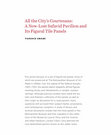
Metropolitan Museum Journal, 2019
This article focuses on a set of figural tile panels, three of which are preserved at The Metropo... more This article focuses on a set of figural tile panels, three of which are preserved at The Metropolitan Museum of Art. Made in Isfahan, Iran, the capital of the Safavid dynasty (1501-1722), the panels depict elegantly attired figures relishing drinks and refreshments in verdant, outdoor settings. Although previous studies have noted the stylistic and thematic uniformity of the panels, as well as their origin as decoration for a royal pavilion, many questions still surround their subject matter, provenance, and contemporary reception. A study of literary and archival documents reveals that the three panels in the Metropolitan Museum and their cognates in the collections of the Musée du Louvre, Paris, and the Victoria and Albert Museum, London (V&A), once adorned the now-demolished pavilion known as the Jahan-nama. It is argued here that while aspects of the panels might have been evocative of paradise and its earthly manifestation in Safavid Isfahan, their main focus—lavishly dressed women in languorous postures— finds its closest analogue in the performative, urban presence of courtesans in Safavid Isfahan.
The Religious Architecture of Islam, Volume I, eds. Hasan-Uddin Khan and Kathryn Blair Moore, 2021

Journal for Early Modern Cultural Studies, 2018
This article explores a corpus of literary works in verse and prose that deal with the city of Is... more This article explores a corpus of literary works in verse and prose that deal with the city of Isfahan, the capital of the Safavid dynasty in seventeenth-century Iran. Following a brief overview of the formats and conceptions of city description in medieval Persian literature, the essay examines seventeenth-century topographical works as verbal expressions of emergent modes of urban experience in early modern Isfahan. Seen together, these works bespeak the formation of a novel arena of literary production—a social terrain nourished by the city and largely independent of courtly circles. The corpus reveals the ways in which seventeenth-century Isfahan became intertwined with the emergence of new expressions of subjectivity and new modes of fashioning the self. Markets, gardens, urban spaces, and coffeehouses were represented in various narratives integrating subjective experiences into the urban landscape.
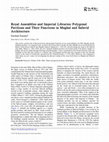
South Asian Studies, 2019
This article examines the architectural form and potential functions of two royal buildings: the ... more This article examines the architectural form and potential functions of two royal buildings: the Sher Mandal and the Guldasta pavilion. An octagonal tower located in the Purana Qilʿa in Delhi, the Sher Mandal was in all likelihood the library (kitāb-khāna) built by the Mughal emperor Humayun (r. 1530-56). Erected during the reign of the Safavid ruler Shah ʿAbbas I (r. 1587-1629), the now-vanished Guldasta pavilion was located south of the palace complex in Isfahan, Iran, and can be studied through drawings and photographs. A close examination of the formal structure of these two buildings reveals that they belong to a distinct type of polygonal pavilion that first emerged in the late fifteenth century in the works of architecture sponsored by the Timurid dynasty (c. 1370-1405). Moreover, this comparative study opens up new venues for investigating the physical setting of the royal kitāb-khāna in Persianate contexts.
Technologies of the Image: Art in 19th-century Iran, eds. David J. Roxburgh and Mary McWilliams
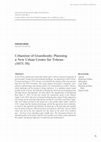
International Journal of Islamic Architecture, 2014
In the 1970s a grand-scale ceremonial urban centre, with an extensive programme of governmental, ... more In the 1970s a grand-scale ceremonial urban centre, with an extensive programme of governmental, commercial and residential buildings, was planned for north Tehran. Construction began in 1975, but was soon halted by the eruption of the street protests that led to the 1979 revolution. This essay analyses the project’s conception, socio-political underpinnings and ultimate failure, by contextualizing it within Tehran’s urban landscape and by tracing its design trajectory. As a grandiose project made possible by the oil boom, the final plan of Shahestan, drawn up by the planning firm Llewelyn-Davies International, not only reflects the megalomania of Mohammad Reza Shah (r. 1941–79) but also reveals the totalitarian nature of the Pahlavi regime in the 1970s. But prior to hiring the planning firm, Queen Farah supported a rival design by the internationally famous architects Louis Kahn and Kenzo Tange, who were indeed involved in the project for a few months before Kahn’s death in 1974. I argue that this duality of patronage, and all the oppositions that it embodies, is echoed in the gendered representation of monarchy in the final plan and signifies how the project subverts a liberal narrative of modernism. Moreover, the new urban centre was not at the city’s physical core but rather at the centre of its northern part – the locus of an expanding upper middle class. The discrepancy between the intended purpose of the project and the social realities of its urban context epitomizes the regime’s paradoxical approach to modernity and modernization.
Social Housing in the Middle East, 2019
Book Reviews by Farshid Emami
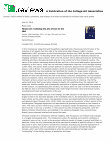
caa.reviews, 2019
In this meticulously researched and thoughtfully organized book, Moya Carey tells the story of th... more In this meticulously researched and thoughtfully organized book, Moya Carey tells the story of the collection of art objects from Iran held at the Victoria and Albert Museum (V&A) in London. Established in 1857 and known as the South Kensington Museum until 1899, the V&A has a particular institutional character-its founding mission was to improve the quality of industrial production by engaging worldwide visual cultures-that turns this museum into an ideal case study for scrutinizing collecting activities in Europe and North America in the second half of the nineteenth century. The nature of the political relationship between Britain and Iran in this period adds another dimension of complexity to this inquiry: while Iran was nominally independent under the rule of the Qajar dynasty , the country faced constant political and economic pressure from imperial and colonial powers, such as Britain. This political situation, which can be termed "semicolonial," created a specific web of interactions and intermediaries that facilitated the transfer of a large amount of artwork outside of Iran. Attending to both contexts-Victorian Britain and Qajar Iran-Carey crafts a lucid, detailed narrative that illuminates the web of art dealers, collectors, professionals, and connoisseurs whose assumptions, tastes, and financial interests culminated in the formation of the V&A collection. The book's primary concerns are the circumstances and mechanisms of collecting: the shifting notions and tastes that turned certain classes of objects into collectible items, the networks that made their transfer possible, and contemporary perceptions of objects once they had been acquired by the museum. In substantiating this narrative, the author draws not only on archival materials at the V&A but also on architectural fieldwork and a wide range of primary visual and textual sources, including travel books and publications of the era.
Review of Middle East Studies , 2019
Teaching Documents by Farshid Emami
Some of the world's greatest cities and architectural monuments were created in the historic Isla... more Some of the world's greatest cities and architectural monuments were created in the historic Islamic lands, a vast region stretching from the steppes of Central Asia to the shores of the Atlantic Ocean. Through a series of case studies and thematic discussions, this course offers a broad introduction to the art, architecture, and material culture of this region over the past 1400 years. We will explore the great capital cities of the Islamic empires such as Baghdad, Cordoba, Cairo, Istanbul, and Isfahan, and will examine their mosques, palaces, and gardens. The objective of the course is not to offer a comprehensive survey but rather an overview of the major works and concepts involved in the study of Islamic visual cultures.
From Ottoman coffeehouses to Japanese teahouses to Parisian cafes, the consumption of substances ... more From Ottoman coffeehouses to Japanese teahouses to Parisian cafes, the consumption of substances such as coffee, tea, and tobacco has long created distinctive material cultures, artworks, and architectural spaces. In this course, we trace the dissemination of these stimulants across the globe from the sixteenth century onward. We will examine the material context of the substances in different scales, ranging from utensils and architectural spaces to urban landscapes and sites of cultivation. Routes of transfer will be explored along with the development of new forms of sociability, material objects, and architectural types such as coffeehouses and teahouses.
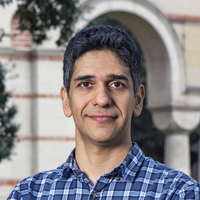









Uploads
Books by Farshid Emami
Papers by Farshid Emami
Book Reviews by Farshid Emami
Teaching Documents by Farshid Emami